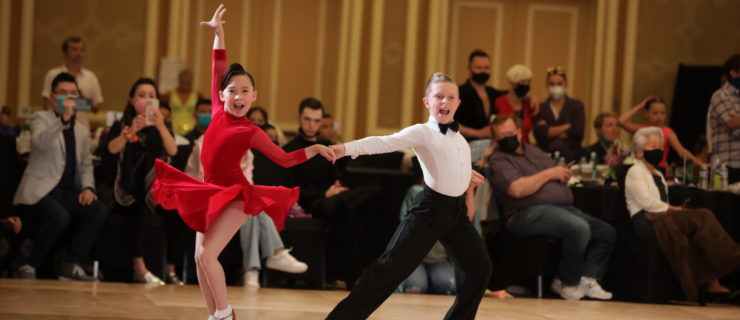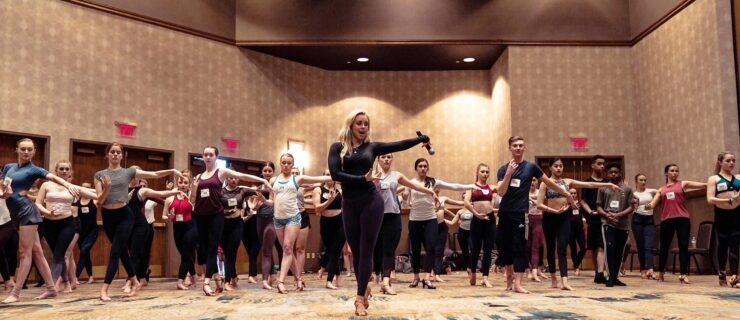How to Master Ballroom Dance’s Distinctive Hand and Arm Styling
If you’ve ever noticed the flirty curl of a wrist in a cha-cha or the elegant swoop of an arm in a waltz, then you know how arm styling can elevate ballroom dance, bringing nuanced character to every step. But dancers new to ballroom—especially those already trained in ballet’s classical port de bras—might find it surprisingly tricky to master the details of hand and arm styling. Here’s how to use your upper body like a ballroom pro.
What Sets Ballroom Arm Styling Apart?
Some ballroom arm positions are very similar to those seen in ballet. What ballet dancers know as first, second, and fifth positions all have a place in ballroom technique. Other arm positions—like the high V-shape known as “crossover” (in rhythm dances) or “New Yorker” (in Latin dances)—are unique to the ballroom world. Unlike ballet, ballroom doesn’t have an official vocabulary for its arm positions outside of frame, so different coaches and teachers might have different names for various shapes.
The ballroom “star” hand is more universal. You can achieve it by fully stretching your fingers and then imagining holding a small object, like a business card, between your middle finger and thumb. It’s a beautiful, expressive shape—though it might feel strange at first. “Often ballroom hands are considered ‘ugly’ in the ballet world,” says Adriana Ardila, who got her start in ballet before becoming a professional ballroom dancer.
Within ballroom, there are distinct differences between arm styling in smooth dances (like waltz and fox-trot) and rhythm or Latin dances (like cha-cha and rumba). “While they both use the same basic principles, smooth dances are much more continuous in their styling, never stopping the flow of motion,” says veteran ballroom dancer Melanie Spanko. “Rhythm arm styling is much sharper and more staccato.” And each specific dance has a unique character that informs how the arms and hands are used.

Adriana Ardila and her partner dancing a tango (Dance Sport Photography, courtesy Ardila)
Common Mistakes
One of the biggest mistakes new ballroom dancers make is assuming that ballroom arm lines are static positions, when actually they’re dynamic, rooted in the movements of the body. Looking at an arm line in a photo, it may appear to be behind the torso—but in reality, the arm is still in second position, and the rotation of the shoulder is creating an illusion. It’s important to understand the technique behind these lines, so you don’t end up distorting your posture and alignment. “Arm lines are the bow on the package, not the gift itself!” Spanko says.
Ballroom arm and hand styling also impacts your dance partner—literally, if you’re not careful. In order to avoid injuries and maintain your connection, you must be aware of where your space ends and where your partner’s begins. For solo ballet and contemporary dancers learning ballroom, this can be a difficult adjustment. “The partnership comes first, then the style,” Spanko explains.
Practice Makes Better
The best way to improve your styling is practice. But Ardila also recommends finding inspiration in other ballroom dancers you admire. “Watch other people move!” she says. “Look at your neighbor and then test out the aspects of their styling that you like.” Imitation is the highest form of flattery, and a great way to improve your arm styling by trying what you see.



